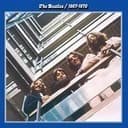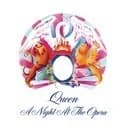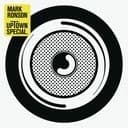The E♭ major scale follows the major scale pattern with three flats: E♭ to F (whole step), F to G (whole step), G to A♭ (half step), A♭ to B♭ (whole step), B♭ to C (whole step), C to D (whole step), and D to E♭ (half step). With E♭, A♭, and B♭ in its key signature, this scale produces a rich, heroic quality that has made it a favorite for brass sections and symphonic climaxes. The interval pattern (2-2-1-2-2-2-1 semitones) maintains the major scale's fundamental structure while the three flats create a warm, robust sonority that feels both majestic and noble, perfectly suited for ceremonial and military band music.
E♭ Major's Relationship with Brass Instruments
E♭ major holds extraordinary significance for brass players due to the acoustical properties of brass instruments. Alto saxophones, alto clarinets, and E♭ tubas are pitched in E♭, making this their concert key. For trumpet, French horn, and trombone players, E♭ major sits in an optimal register that produces focused, brilliant tone with relatively comfortable fingerings. This explains why military bands, brass bands, and orchestral brass sections sound so powerful and resonant in E♭ major. Composers from Beethoven to John Philip Sousa have exploited this key's natural affinity for brass, writing some of their most heroic and triumphant passages in E♭ major.
Classical and Contemporary Applications
E♭ major's majestic character has made it a cornerstone of symphonic literature. Beethoven's "Eroica" Symphony No. 3 and Mozart's Symphony No. 39 showcase E♭ major's capacity for both heroic grandeur and tender lyricism. In popular music, songs like "Hey Jude" by The Beatles and "Shape of You" by Ed Sheeran utilize E♭ major's warm, accessible tonality. The primary chords (E♭ major, A♭ major, and B♭ major) create powerful I-IV-V progressions that sound sophisticated yet emotionally direct. Jazz musicians frequently encounter E♭ major in standards and original compositions, making fluency in this key essential for ensemble playing and improvisation.
Technical Development in E♭ Major
Piano students should practice E♭ major with proper fingering (right hand: 3-1-2-3-4-1-2-3 or 2-1-2-3-4-1-2-3; left hand: 3-2-1-4-3-2-1-3), noting the non-standard starting finger that accommodates the three flats. Begin at 60 BPM, ensuring all three flats (E♭, A♭, and B♭) are executed cleanly and automatically. For brass players, E♭ major provides excellent material for developing tone quality, as the key sits in a resonant register that facilitates good sound production. Saxophonists playing alto saxophone will find E♭ major particularly natural, as it's their instrument's concert key, making it ideal for technical studies and etude work.
Mastering E♭ major is crucial for musicians working in band literature, orchestral music, and jazz. After E♭ major, continue to A♭ Major (four flats) and D♭ Major (five flats) to advance through the flat keys. Explore its parallel minors: E♭ Harmonic Minor and E♭ Melodic Minor for more dramatic harmonic colors. Whether you're performing Beethoven symphonies, playing in a jazz combo, or marching in a brass band, E♭ major's heroic character and instrumental resonance make it one of the most important and rewarding scales to master.





